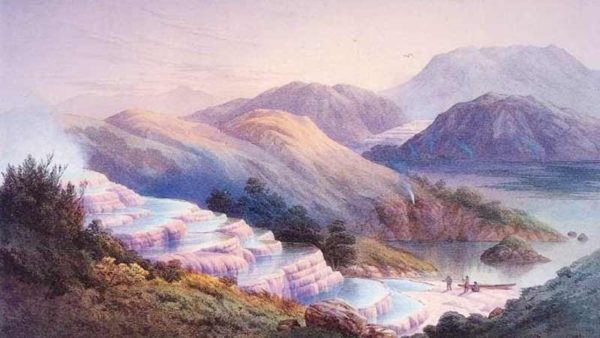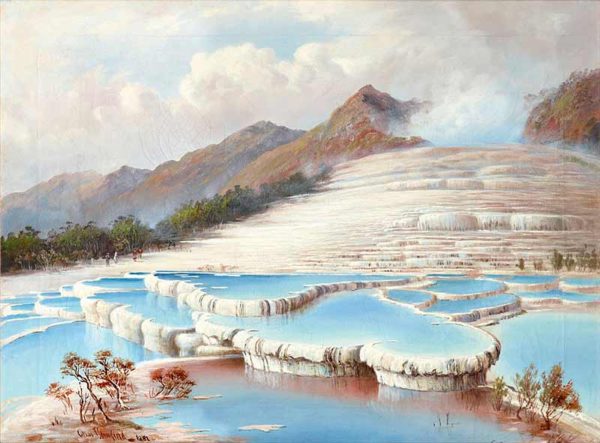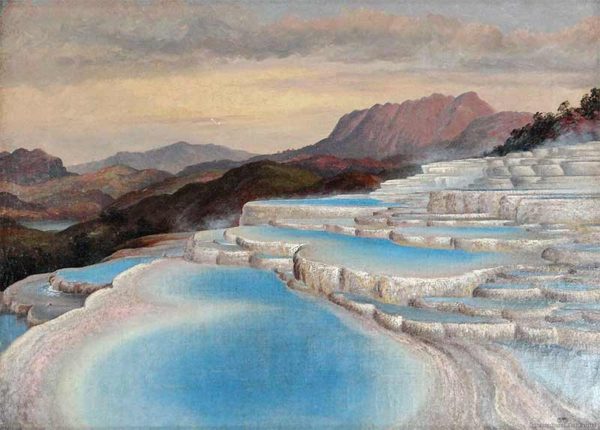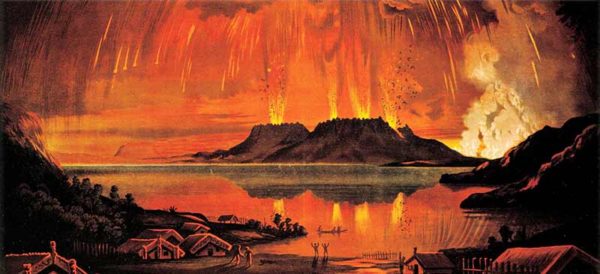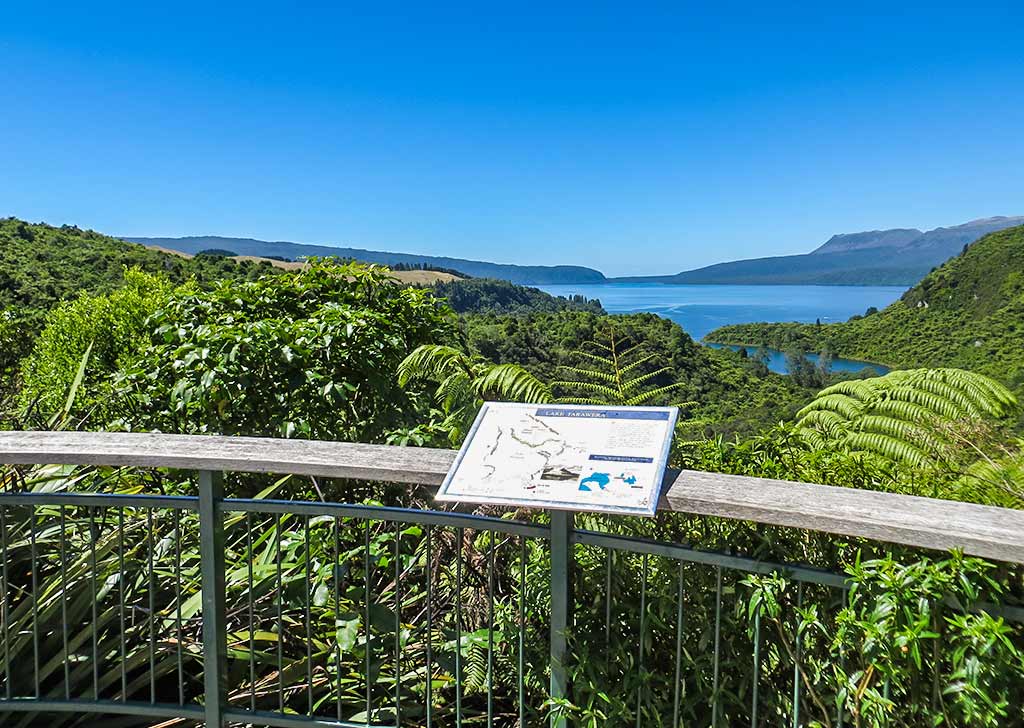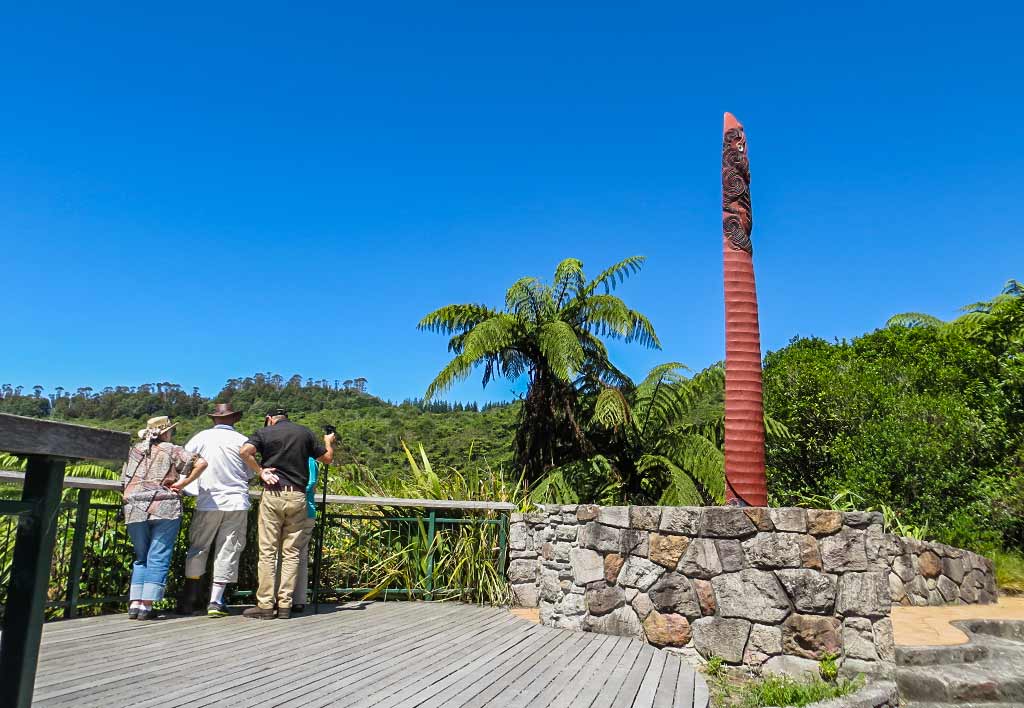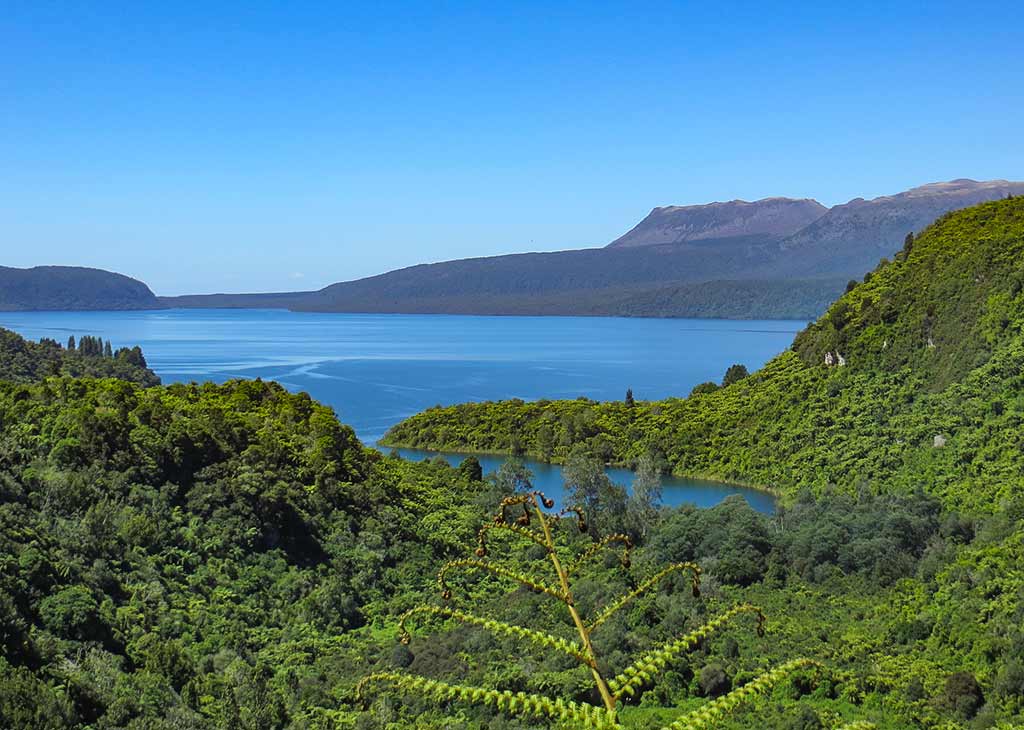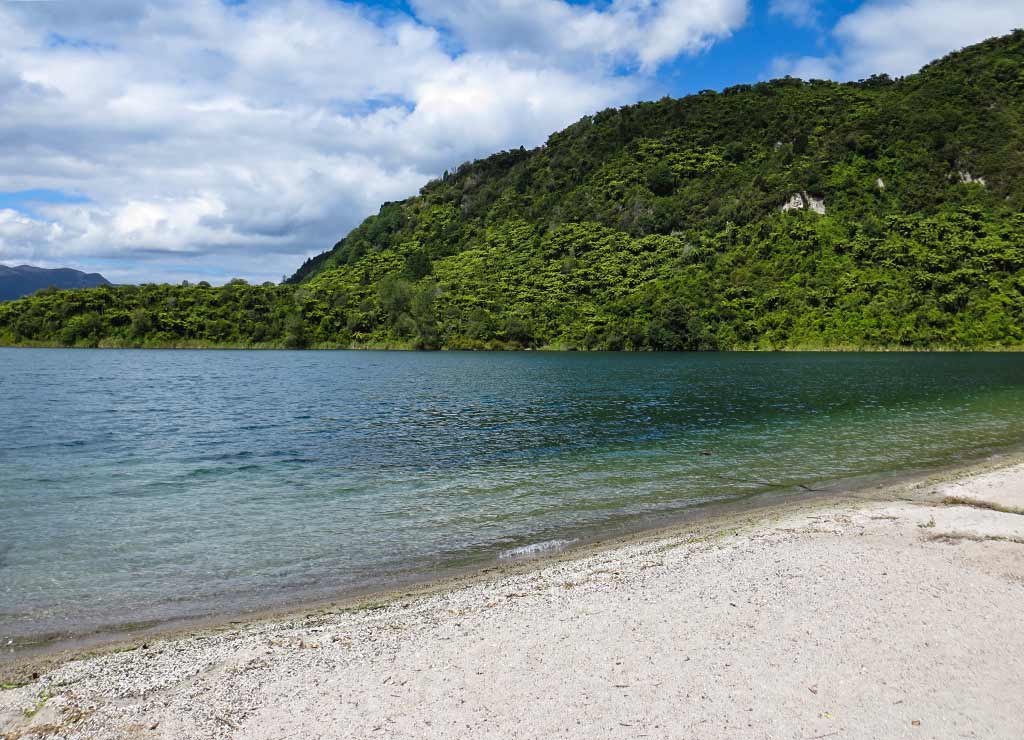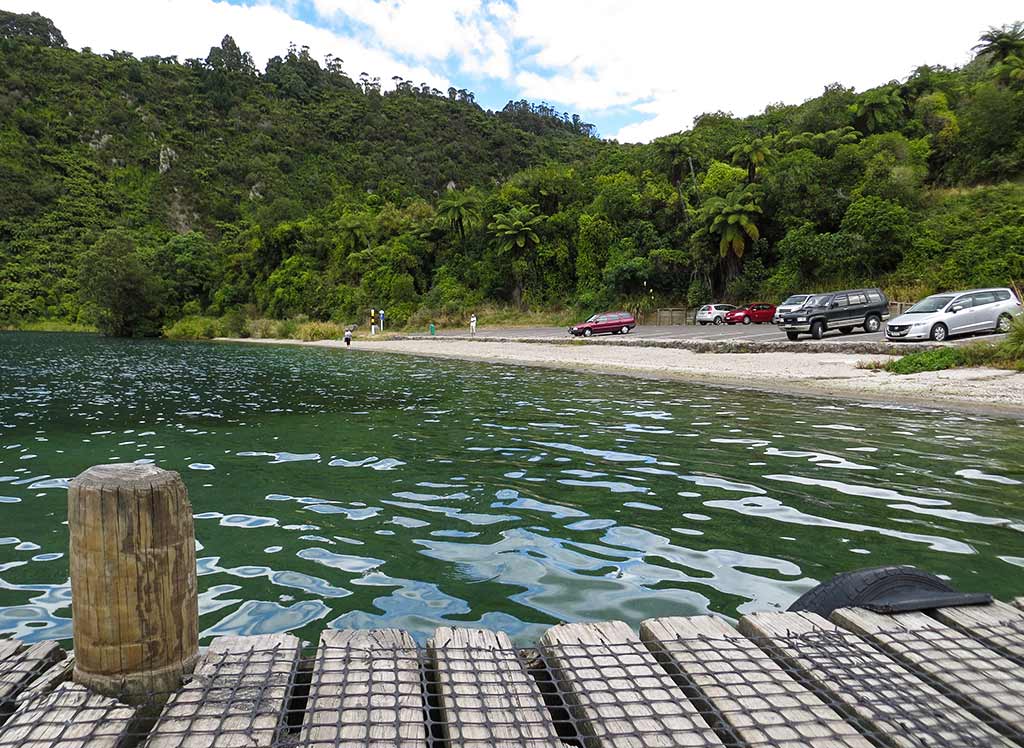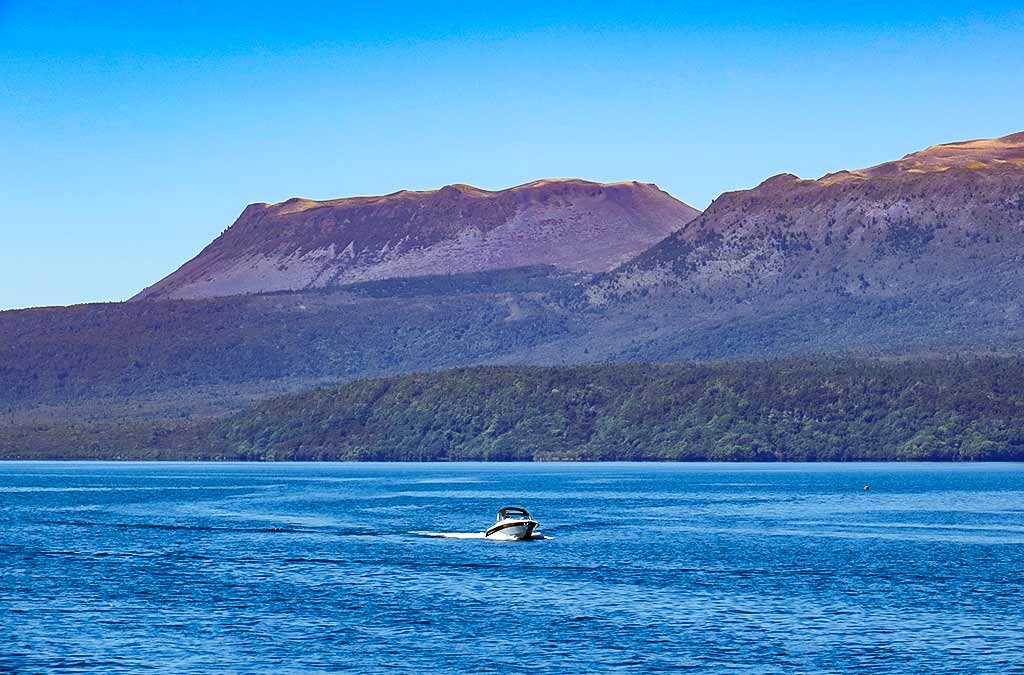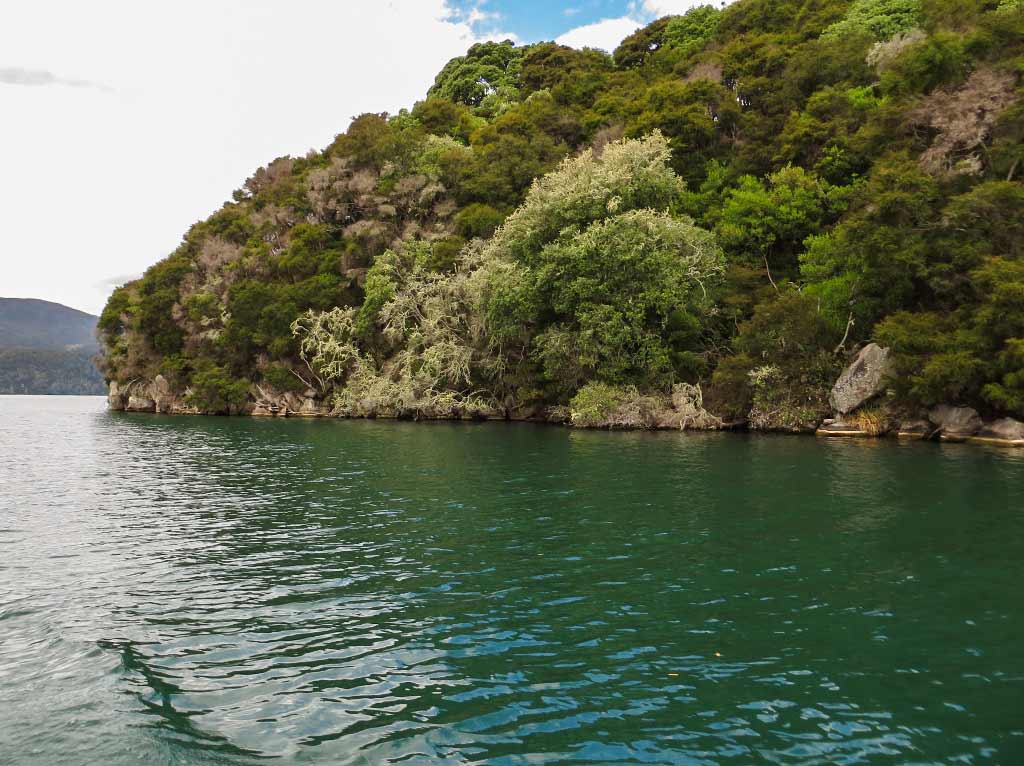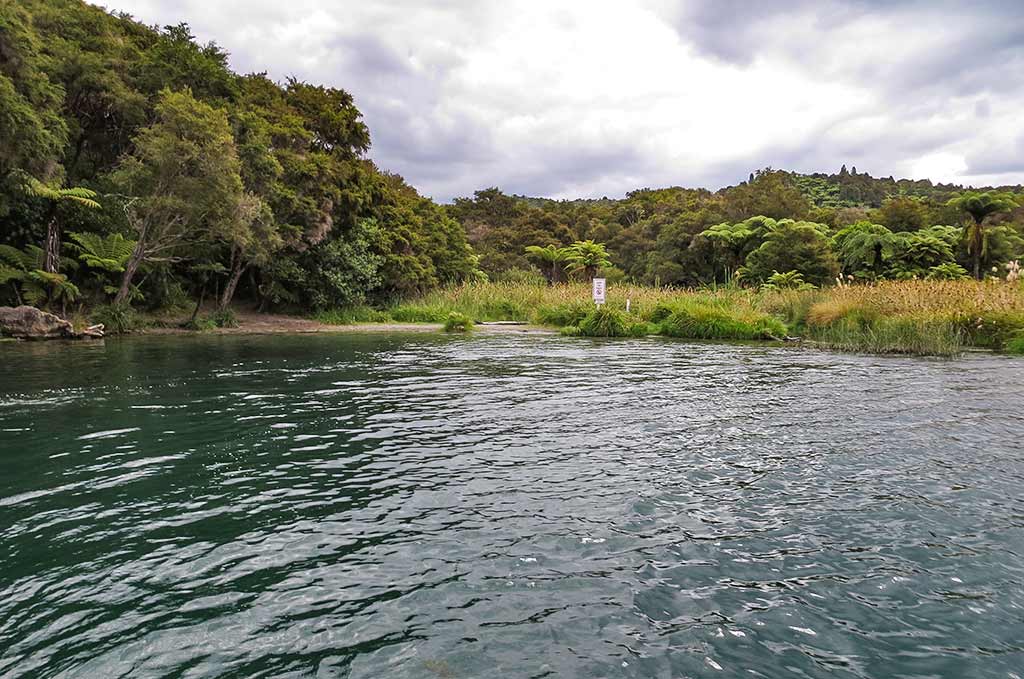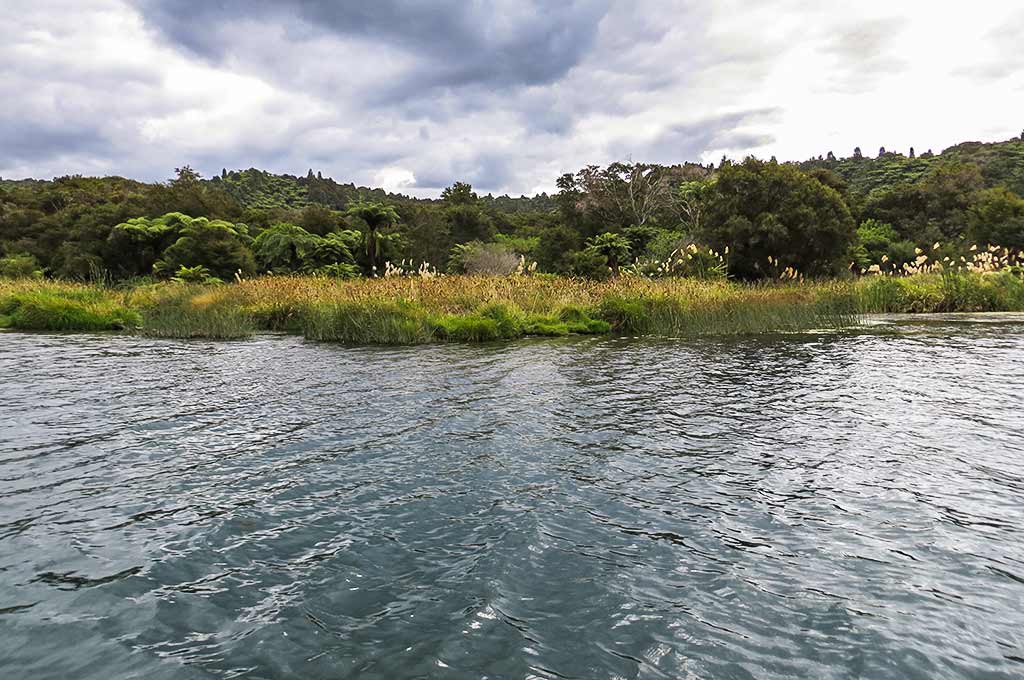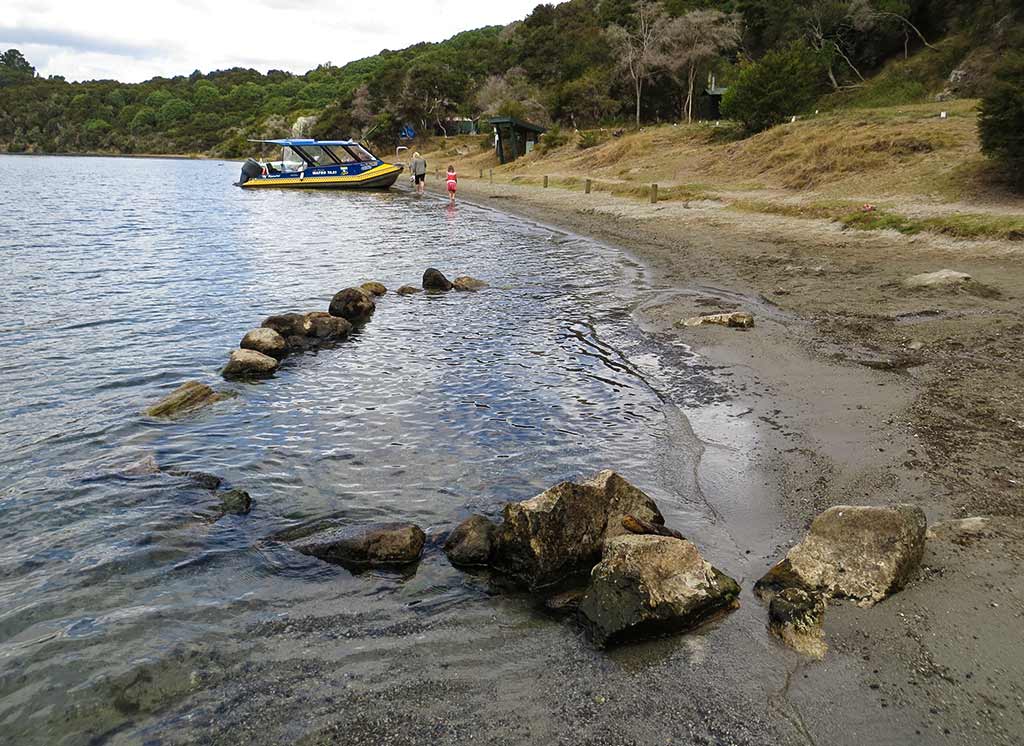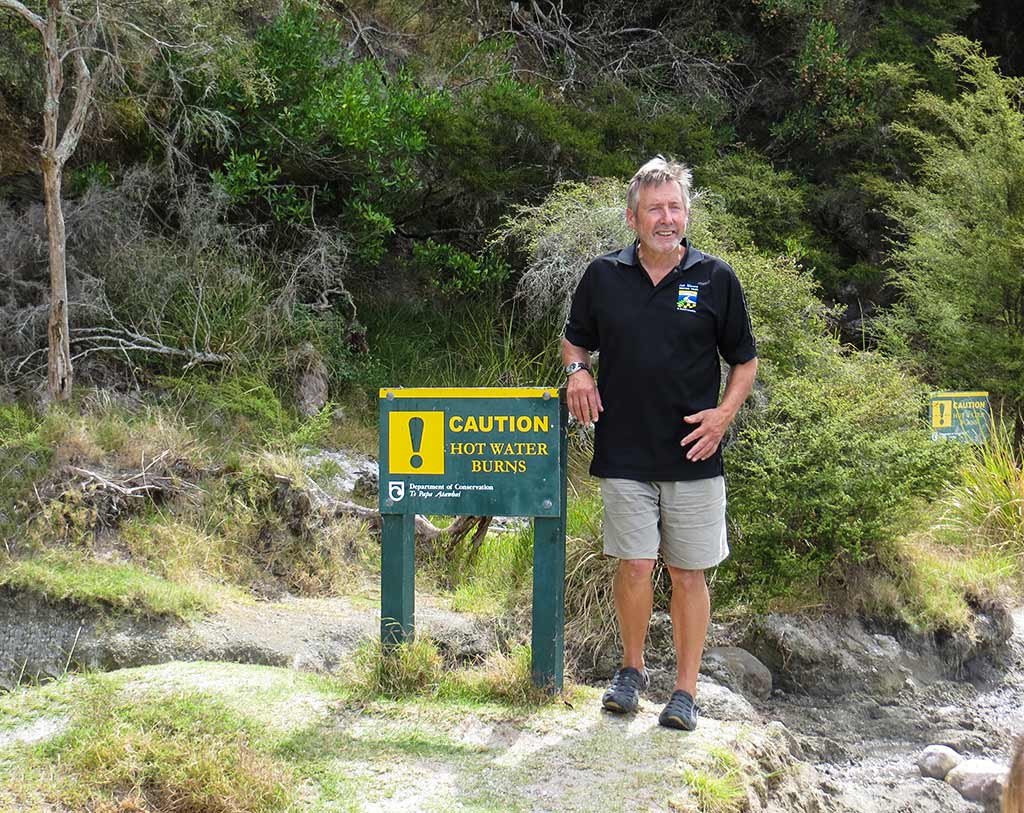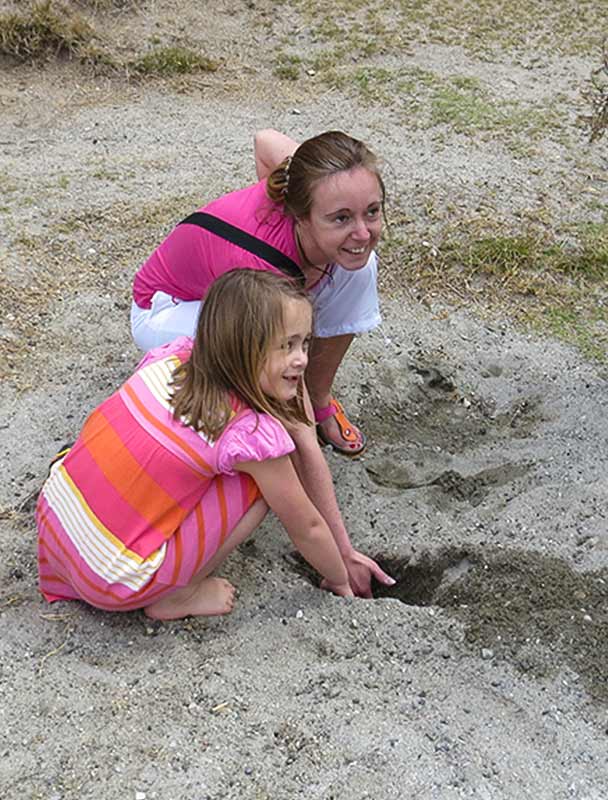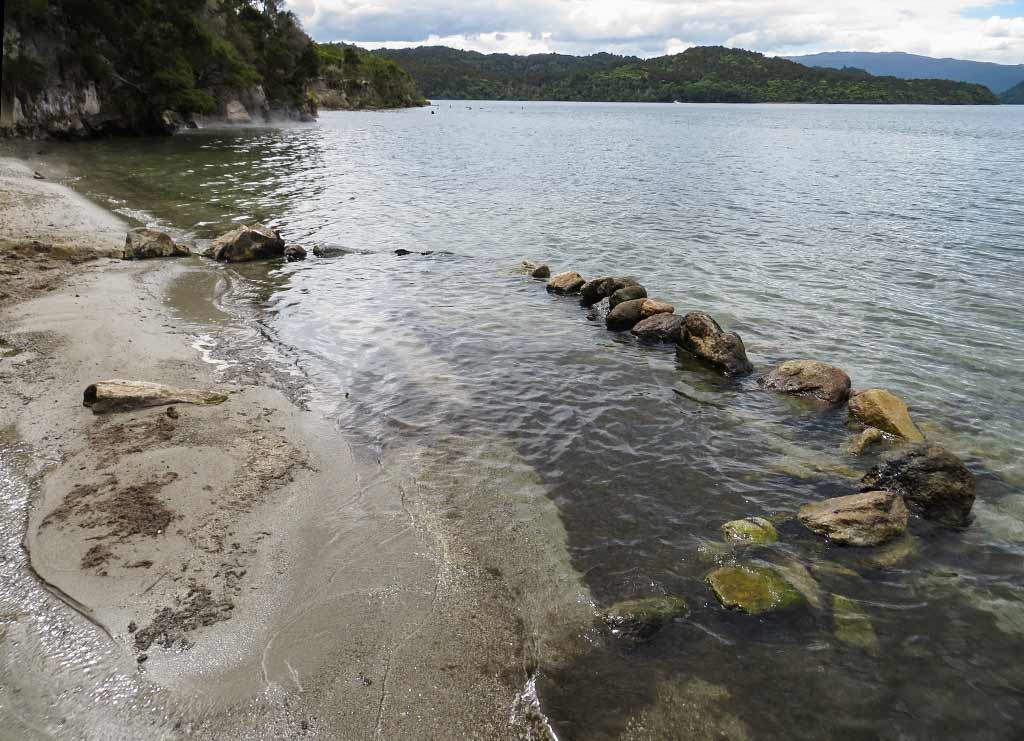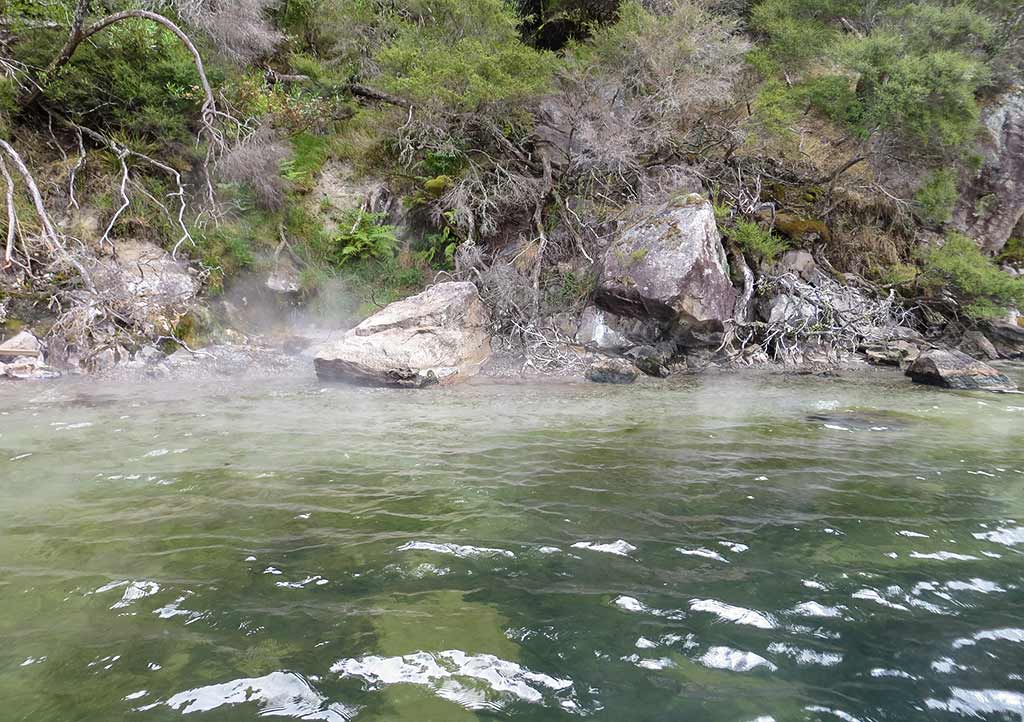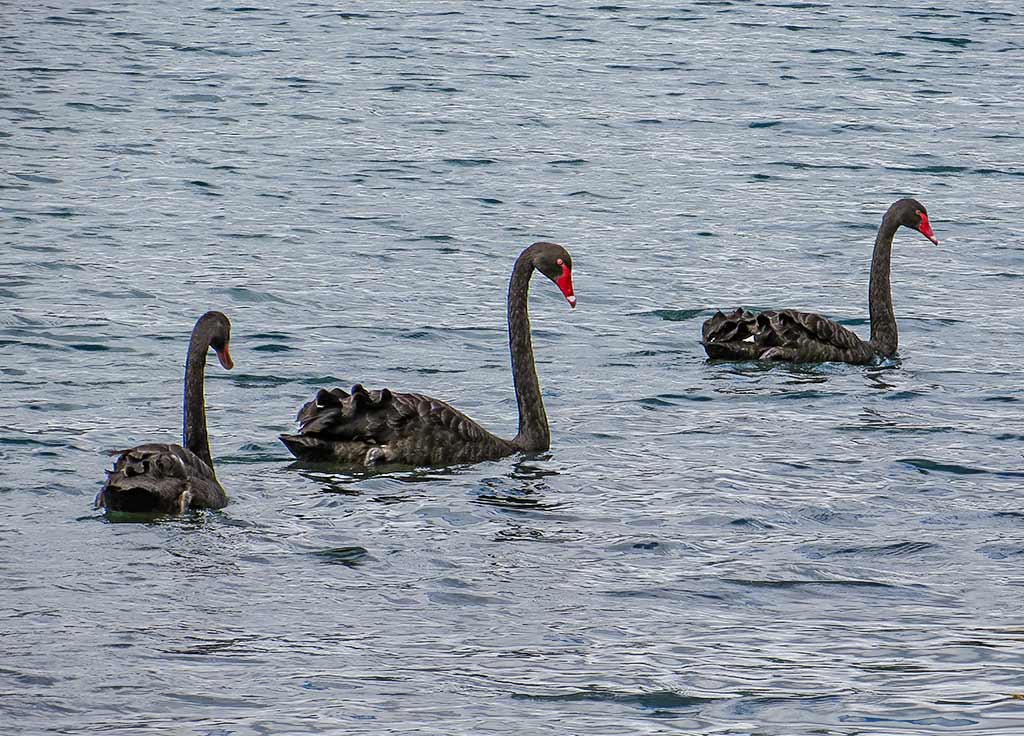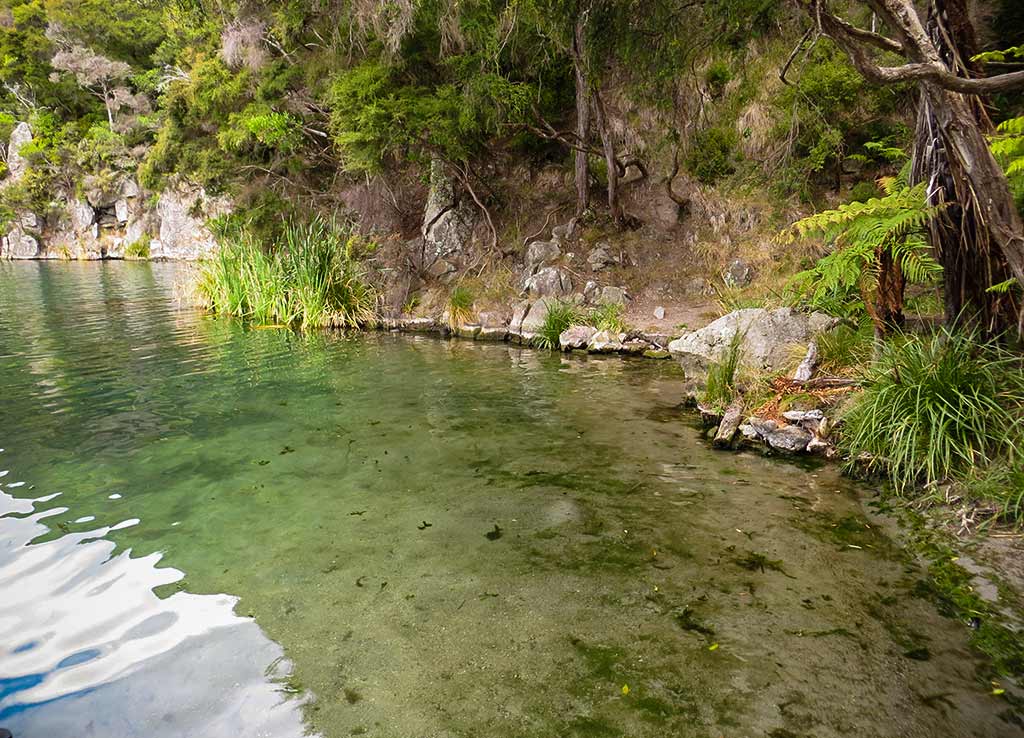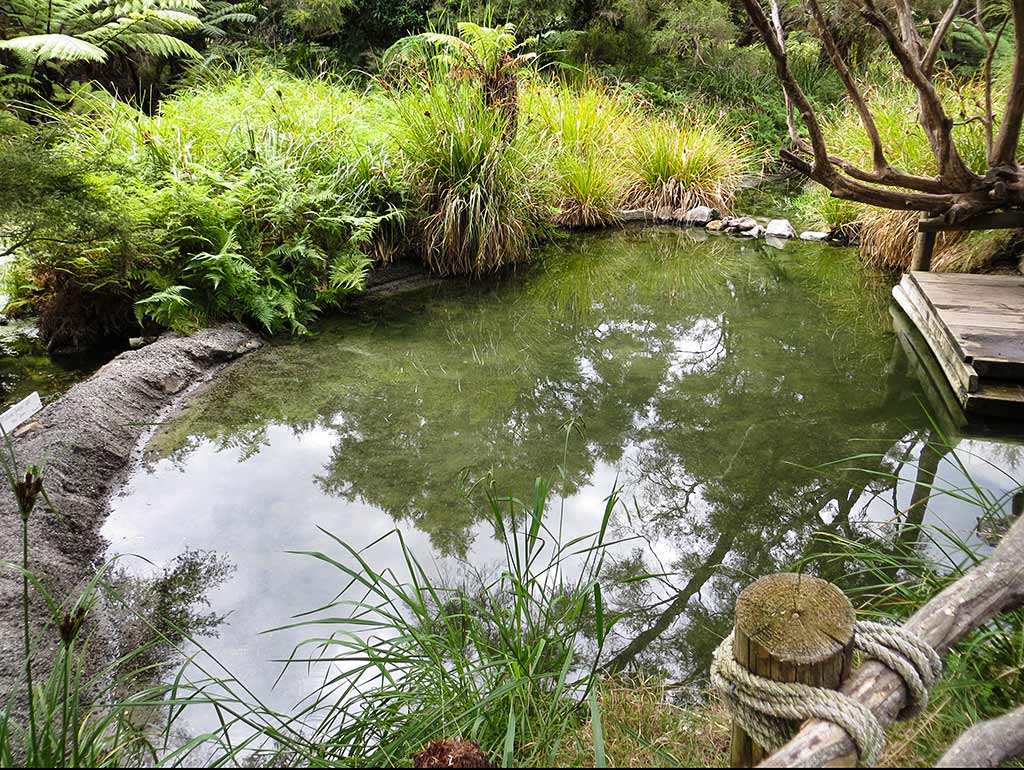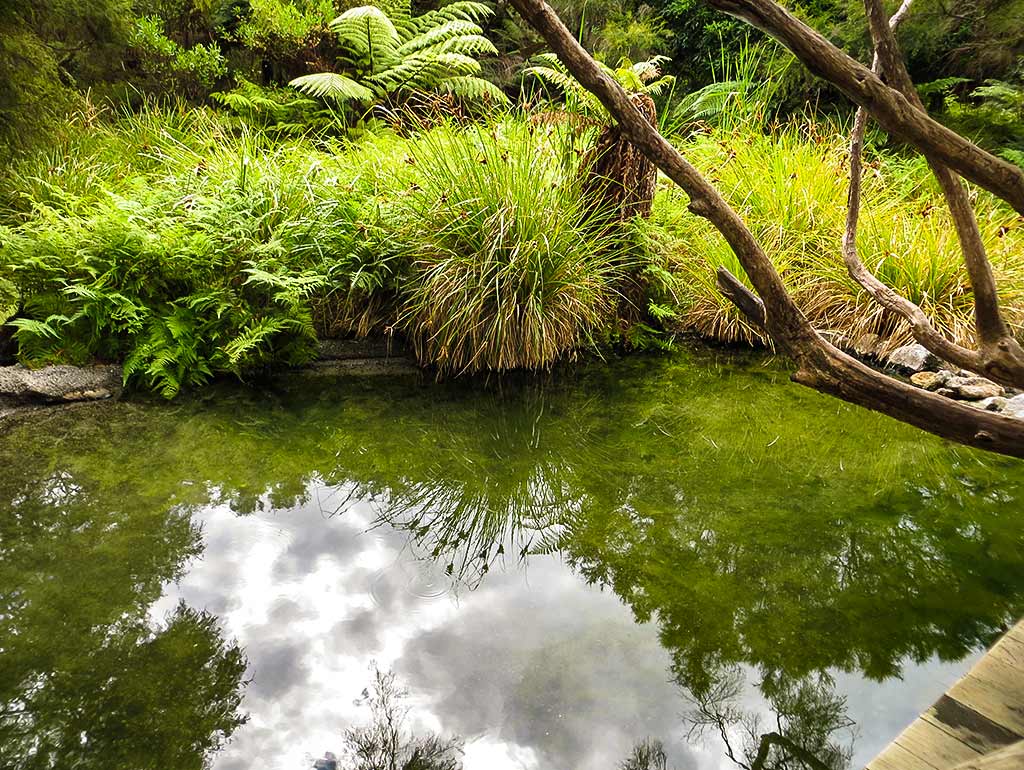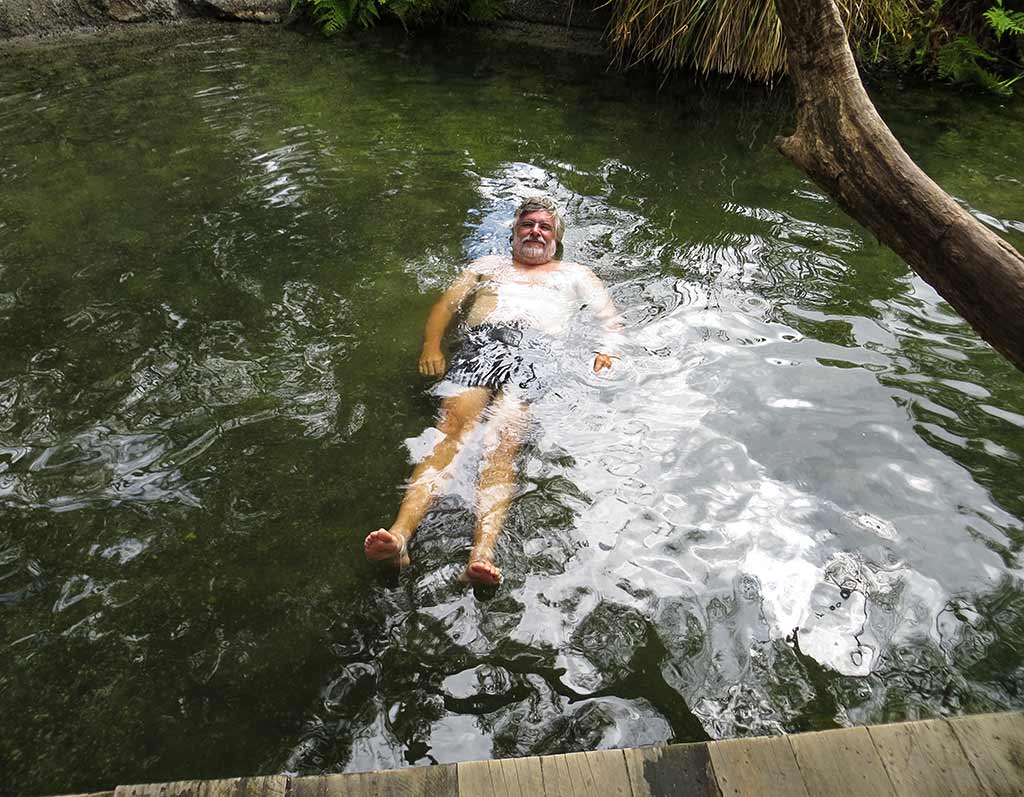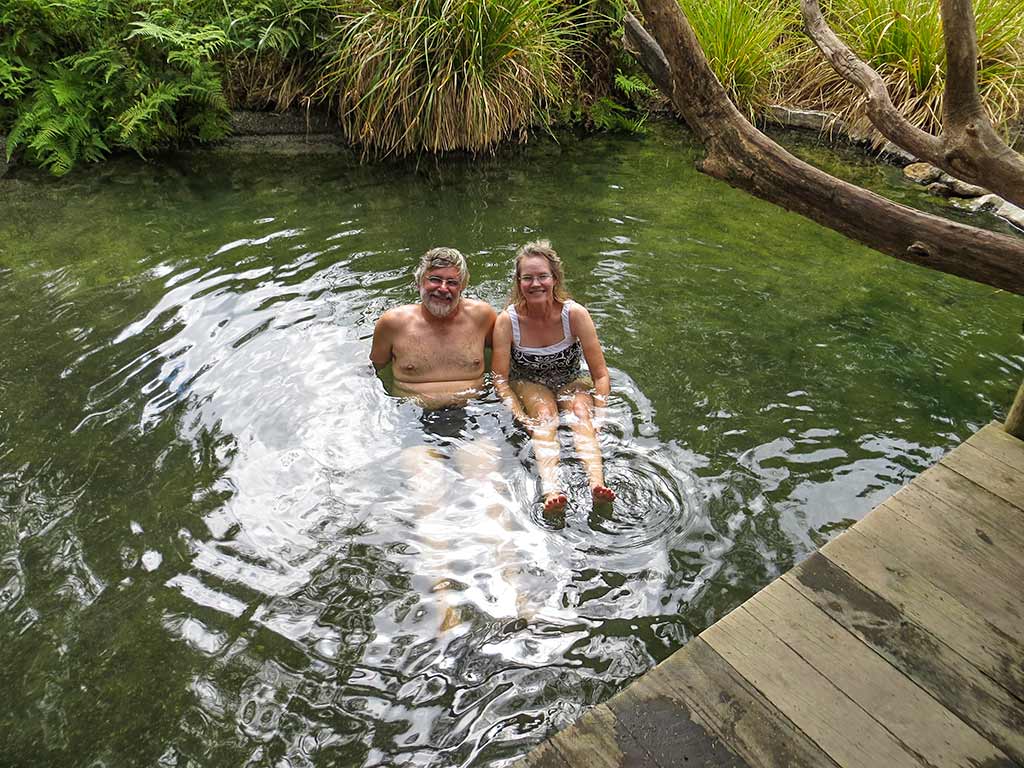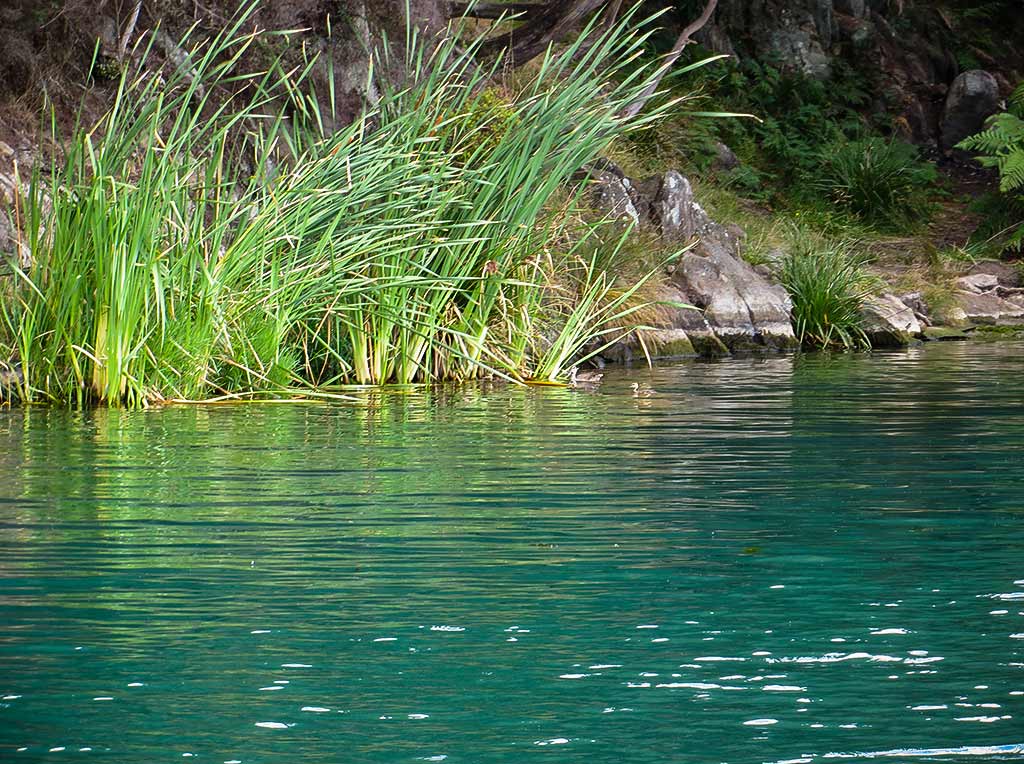February 26, 2014
Our final outing in Rotorua was a boat ride across Lake Tawarera (the Lake Tawarera Water Taxi Eco Ride). Included with the ride was a visit to a hot water beach, a bush walk, and a soak in a natural hot spring. It would be a scenic outing, but getting a sense of the area’s volcanic history was a big part of the reason for doing this trip.
Before the late 1800s, this area was home to one of the world’s natural wonders, the Pink and White Terraces. These terraces were formed by upwelling geothermal springs of silica-saturated water. The mineral deposits in this water formed huge multi-level terraces covered with honeycombs of hot water pools.
So amazing were these terraces that even in the 1800s, visitors came from around the world to see—and soak in—the pools. The fact that these terraces sat on a lake surrounded by pristine mountain and forest scenery was an added bonus for these travelers.
The terraces which were located about a mile from each other. The White Terraces may have been the most striking to look at, but the Pink Terraces were preferred as the water had the most pleasant temperatures for soaking. Below, an artistic depiction of the Pink Terraces followed by two of the Blue done by Charles Blomfield, an artist who spent extensive time in the area before the eruption.
Sadly, this wonderland met its demise on a June night in 1886 when a massive volcanic mountain, Mount Tawarewa, erupted. The night’s events started with a series of earthquakes and a rash of sheet lightening. This was followed by the eruption of the volcano’s three peaks, each blasting columns of smoke and ash high into the sky. Finally, around 3:30am, came the largest eruption, a pyroclastic surge that buried the terraces and several Maori villages. By the time this event finished, the shape of the nearby lakes and surrounding landscape were forever changed. The remains of the Mount Tawarewa are still visible, but the Pink and White Terraces are gone forever.
Below, a painting depicting the eruption of Mount Tawarewa. Having eruptions from three peaks must have looked like the end of the world to those who witnessed it!
Today, the largest of the buried Maori villages, Te Wairoa, has been excavated. Much of it was preserved by the volcanic ash, and it’s not surprising that this archaeological site is a popular tourist destination. For us it was tempting to visit, but in the end we decided to learn about this history by taking the tour boat ride.
Before going to the lake, we stopped at an overlook to read the plaques and take in a view of the lake.
We then headed to the boat and met up with the other passengers and our guide, Dave. Soon we were all onboard and headed across the lake. Occasionally Dave would stop the boat to tell us stories of the past and what it was like when the volcano erupted. I’m not always a fan of being part of a tour group, but there are times that a special synergy happens when the guide is a good story teller and the group anxious to hear the information. It’s like going back to being a kid during class story time, listening with wonder as the teacher would read form a spellbinding book. This tour felt like that, the story brought to life by our guide and the scenery around us.
Below, a gallery of photos from our boat ride, including the remains of Mount Tawarera (click on any photo to enlarge).
After a time, we arrived at the hot water beach, a phenomenon that happens in a few spots in New Zealand. Basically when the tide is right, you can dig in the sand and find hot water, making your own little hot pool. We then walked to an area with streams of scalding water where one could cook food (a traditional Maori way of cooking). I accidentally stepped in a small finger-size stream of hot water, burning my toe. I went to cooler water to cool it off but found hot sand at the bottom of it. This geothermal activity can complicate things if you pick the wrong place to cool off. Below, a gallery of photos of the beach…
We continued to follow Dave around, taking in the information about this exotic place. Black swans floated nearby and came close, and Dave pointed out to us a very rare small bird.
We went on a short bush walk and found the hot spring pool. It’s natural but has been enhanced by a small deck and rocks to dam the water. We’d worn our bathing suits, as had a few others in the group, and we headed into the pool. It was lovely to have a nice long soak in that hot spring.
Afterwards, we headed back to the boat, speeding across the lake feeling warm and relaxed after the soak. In all, this was a very satisfying and fitting end to our trip to Rotorua.
Once back in Tauranga we thought we’d treat ourselves to dinner at Phil’s, the lovely restaurant overlooking the Tauranga Bridge Marina. While we took showers, the owners saved us a table outside on the rail, under an umbrella and overlooking the water. This evening became one of our special moments in New Zealand, happy after the trip, sitting in the warm evening sun, Penny serving us cold New Zealand Sauvignon Blanc to go with the restaurant’s special seafood chowder. This is the kind of moment where life just feels good. Our Rotorua trip, topped by this dinner, was just what we needed to kickstart our time in Tauranga. –Cyndi

